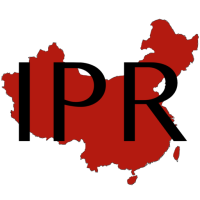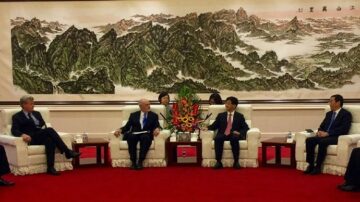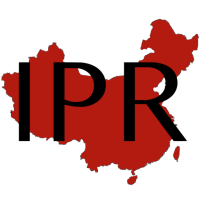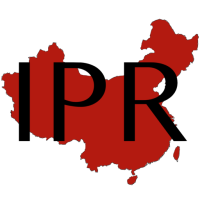
The Chongqing Intermediate Court’s recent decision to set a global FRAND rate in Oppo v. Nokia ((2022渝01民初1232号) is available from the IP Finance platform. The case is not yet available on the official public judicial database (as of Dec. 17, 2023). It is the first Chinese case to determine a global SEP/FRAND global royalty rate. The court set four rates: $0.477 per unit for 4G SEPs in China and other less developed territories; $0.777 was set for 4G in more developed territories; $0.707 per unit was set for 5G for China and other less developed territories, and a 5G royalty rate of $1.151 more developed territories. These numbers for Nokia are markedly different from Nokia’s rate on its website of $3.27 for 5G. Nokia did not support a discounted rate for China. Nonetheless, the rate is not different by the extreme fractions of earlier cases such as Huawei v. Conversant or Huawei v. Interdigital.
Nokia has said it will appeal the ruling, which it views as “limited to the Chinese jurisdiction only and as such represents only one view.” The case is one of at least eleven litigations that Nokia has brought against Oppo and likely conflicts with domestic and global rate-setting cases in numerous other jurisdictions where there is ongoing litigation, some of which may involve a global rate-setting (UK, India).
For those Western observers unfamiliar with Chongqing where the court is located, a few facts: it is an autonomous city like Beijing, Shanghai, and Tianjin, with provincial-level status. It was Deng Xiaoping’s hometown. It has an excellent legal infrastructure and is well-known as the home of the Southwest University of Political Science and Law, famous for training judges. It was once the capital of the Republic of China during WW II. Joseph Needham, the great scholar of Chinese science and innovation, was once a consular officer in Chongqing.
Setting a China Rate
The case loosely follows the practice and wording of many prior Chinese SEP cases. For example, Chinese courts have previously set lower rates for China, as have courts in the United States and the United Kingdom. The reasoning for a lower Chinese rate, in my view, has become more tenuous over time, as China’s technological and economic status have grown. Oppo v Nokia determined that a lower rate was necessary based on “patent global patent distribution of the relevant countries, the income, the consumer buying power in relevant countries, the strength of the patents, etc., combined with GDP.“ My arguments with this approach include the following:
- Establishing a lower royalty rate for one set of countries as compared to another without a basis in patent law violates China’s obligations to provide most favored nation treatment to the party asserting the patents, by providing lower damages in certain countries. Chinese courts should not treat one country more favorably than any other in its courts. See TRIPS Art. 5.
- Less expensive phones in those jurisdictions are likely more dependent on the relevant SEPs and have fewer non-essential features characteristic of more expensive phones. Under FRAND principles, royalty rates should, instead, be based on the contribution of the patents. As such, the royalty rate should arguably be higher as a percentage of the total price of the phone in specific markets, even if it may be lower in absolute terms.
- Setting unduly low royalty rates raises other TRIPS problems, including whether the damages/royalty constitute a “deterrent” to further infringement and whether “damages adequate to compensate for the injury” in those countries under the TRIPS enforcement provisions.
- If consumer purchasing power should be a factor in setting royalty rates, purchasing power equivalent (PPE) would likely be more relevant in determining purchasing power than GDP.
- Continuing Chinese royalty preferences based on comparable licensing practices in other cases and jurisdictions grandfather in China’s developing country status and are poorly substantiated in light of China’s rapid technological development.
- Using broad economic factors for lower royalty rates is comparable to a preferential tariff for China under the Generalized System of Preferences (“GSP”). Most developed countries have been “graduating” China from GSP tariffs. Even the Global Times has recognized that the era of GSP has come to an end for China. A lower China-based tariff royalty rate based on general economics makes little sense.
Oppo v. Nokia also follows the path of Huawei v. Samsung and other early cases. The court’s adjudication committee reviewed the case, consisting of senior judges who assist the deciding judges in deciding complex or politically sensitive cases. The court also applied Chinese civil law concepts such as “fairness,” “reasonableness,” and “integrity/honesty” to FRAND litigation instead of the ETSI definition of FRAND (see below).
Following Chinese Law Exclusively
The case follows the Chinese “tradition” of disregarding foreign law, especially French law, in interpreting FRAND. The court disregarded French law entirely when it noted that “the parties have not agreed on the applicable law.” Instead, the court looked at the Chinese connections to the dispute. These include such factors as the number of Chinese patents involved, the plaintiff’s registration place and main production, R&D and manufacturing base in China, the goods are manufactured in China, where the expected patent license contract is signed, where the actual patent license negotiations took place, and where the protection is requested. This explanation does not address the role of ETSI’s FRAND standard, the problems of territoriality in patents (including Article 6 of the Paris Convention), or China’s traditions of respecting the territoriality of patents. In applying territoriality concepts, a closest connection type test should also consider the impact of ongoing litigations in other jurisdictions.
Having previously failed to claim that the court had no jurisdiction over a global rate, Nokia claimed that the court had no jurisdiction over a cross-license agreement. The court’s reply was unequivocal. “As for the defendant’s opinion that the dispute, in this case, should not be accepted and judicially adjudicated without the consent of one of the parties involved in the cross-licensing negotiation, this court believes that this opinion is a dispute that has been resolved in the jurisdictional objection ruling of this case. The specific reasons are as follows: The court will not repeat it here. The defendant’s opinion is not supported by this court in accordance with the law.” If Nokia had not consented to litigation where it would obtain a cross-license from Oppo, this argument appears reasonable to me. To the extent FRAND disputes are not considered contractual, the court also declined to address how a Chinese court can determine the validity, infringement, and damages arising in third-country jurisdictions absent consent by the affected party, which also runs against China’s traditional notions of territoriality in patent matters. See, by comparison, the non-SEP Federal Circuit case, Stein Associates, Inc. v. Heat & Control, Inc., 748 F.2d 653, 658 (Fed. Cir. 1984), (“[o]nly a British court, applying British law, can determine validity and infringement of British patents.”).
Inconsistent and Misleading Translations of FRAND
The court decision also does not indicate that Nokia raised any questions or concerns about the court’s construction of FRAND. Since approximately 2020, Chinese courts have favored translating FRAND as “fair, reasonable, non-discriminatory” (公平、合理、无歧视), leaving out the “and” (和 or 及). English translations of FRAND from Chinese cases generally reinsert the “and,” making the different usages in Chinese invisible to an audience that does not read Chinese. This change in judicial translation practice appears to have been loosely timed with the revised patent judicial interpretation (Dec. 23, 2020), which interpreted FRAND without the “and” (Art. 24). Tellingly, the Oppo v Nokia court is inconsistent. When the court discussed the ETSI IP policy, it included the “and.” However, when the court applied its view of FRAND, it translated FRAND without the “and.” The distinction should be well known to Oppo, which encountered this issue in the civil antitrust case Oppo v Sisvel, where the court included the “and” when it also referred to ETSI principles ((2020)粤73民初451号). There have been other cases where Chinese litigants in a defensive position have tried to rely on the more limited view of FRAND, which includes the “and,” such as when Huawei was sued by Samsung in Beijing ( ((2017)京民辖终380号) and the Nanjing Intermediate Court decision of Huawei v. Conversant, where Huawei argued that it was behaving consistently with FRAND with an “and.” ((2018) 苏01民初232、233, 、234号).
There are other examples in Chinese judicial and administrative practice where an “and” is used to translate FRAND. One is the MofCOM approval of Microsoft’s purchase of Nokia’s cell phone division (pre-2020), where the Ministry of Commerce included the “and.” Besides MofCOM, SAMR has also been inconsistent in using the “and.” Taiwanese authorities have generally adhered to using the “and,” as have Japanese courts. All three jurisdictions translate the Western comma into the East Asian enumerative comma (、), generally used to itemize a list. To date, all the official translations from the United Nations or international agencies I have reviewed that discuss FRAND (ITU, WIPO) have included the “and.” A WTO panel in the Chinese IP enforcement case DS362 previously translated the enumerative comma as meaning “/” or “and/or” (fn. 388).
In my view, the proper translation is FRAND with an “and.” Otherwise, it would be “FRND”. Moreover, the “and” is required by ETSI’s IP Policy as a unitary, standardized concept and not as a collection of disaggregated legal commitments. The inconsistent translations of Chinese courts and administrative agencies have led to confusion and inconsistency with international practice. As a disaggregated term, the courts have been reluctant to consider how FRAND works as a unified concept. They may have also resulted in undue reliance on domestic Chinese civil law concepts of “fairness,” “reasonableness,” and “honesty/integrity.” As fairness (gongping/公平) already includes concepts of “equality” (pingdeng/平等), this translation of FRAND may also unduly emphasize non-discrimination without the softening factors of whether an apparently discriminatory rate is nonetheless “fair” and/or “reasonable.”
Oppo v Nokia in the WTO Context
The Oppo v. Nokia decision also presents some troubling issues concerning the role of the WTO disputes in addressing the extraterritorial jurisdiction of courts adjudicating the value of third-country patent rights. I discuss some of these issues in my recently published article “China’s Practice of Anti-Suit Injunctions in Standard-Essential Patent Litigation: Transplant or False Friend?” in 5G and Beyond, Jonathan Barnett, ed. I observed in my article that China was not likely to continue to aggressively pursue antisuit injunctions (ASIs) due to the opposition of the European Union and other countries, including the EU’s filing of a WTO case against China. The ongoing WTO case raises concerns about Chinese interference in foreign court proceedings and the lack of transparency in Chinese court cases and policy decisions. The WTO recently held a hearing on this dispute in November. At the closing oral statement on November 2, 2023, the EU stated Article 1.1. of the TRIPS Agreement requires that WTO members “give effect to the terms of this Agreement” (Art 1.1) by not interfering in the legitimate exercise of the rights of others. A global rate-setting procedure by China, like an ASI, could similarly violate this “policy of restraint.” The EU also noted that the Chinese position was that “the Chinese courts remain authorized to issue global anti-suit injunctions in SEP litigation, depriving the patent owners from the rights conferred upon them by the TRIPS Agreement.” In other words, considering other developments, China’s current policy of refraining from issuing ASIs may be temporary. It is conceivable that a Chinese court could issue an ASI to address foreign court proceedings that impact the enforceability of its global rate determination. In any event, it is increasingly important that the panel consider how effective any WTO decision involving ASIs will be as China decides to focus on global rate setting instead of ASIs in the future.
The EU closing statement did not have the benefit of the Oppo v. Nokia decision, which remains to be officially published. However, concerns about declining judicial transparency in China have generally been mounting, as noted by many observers, including Prof. Liebman and others in a recent Columbia Law Review article. China’s recent decision to launch an internal judicial database may further weaken the role of the current official public database.
Summary
Much of the attention thus far on Oppo v. Nokia has been on the rates set by the Chongqing court. The legal and factual bases for this decision will likely be discussed soon by economists as translations become available. My focus on this blog has been to look at how the decision fits into the continuous development of Chinese jurisprudence, including how it affects China’s compliance with international norms. The case is being appealed to China’s Supreme People’s Court, which may also shed further light on the decisions made in Chongqing.
All translations are non-official and subject to change. Please send me your observations!
- SEO Powered Content & PR Distribution. Get Amplified Today.
- PlatoData.Network Vertical Generative Ai. Empower Yourself. Access Here.
- PlatoAiStream. Web3 Intelligence. Knowledge Amplified. Access Here.
- PlatoESG. Carbon, CleanTech, Energy, Environment, Solar, Waste Management. Access Here.
- PlatoHealth. Biotech and Clinical Trials Intelligence. Access Here.
- Source: https://chinaipr.com/2023/12/18/oppo-v-nokia-in-context/
- :has
- :is
- :not
- :where
- $3
- 1
- 17
- 2017
- 2018
- 2020
- 2023
- 22
- 23
- 24
- 27
- 2D
- 49
- 5G
- a
- About
- absent
- Absolute
- accepted
- accordance
- actual
- address
- addressing
- adhered
- administrative
- affected
- affects
- against
- agencies
- aggressively
- agreed
- Agreement
- All
- already
- also
- an
- and
- Another
- antitrust
- any
- appeal
- appears
- applicable
- applied
- Applying
- approach
- approval
- approximately
- ARE
- arguably
- argued
- argument
- arguments
- Art
- article
- AS
- asian
- Asserting
- assist
- associates
- At
- attention
- audience
- Authorities
- authorized
- autonomous
- available
- base
- based
- basis
- BE
- become
- been
- Beijing
- being
- believes
- below
- benefit
- besides
- Beyond
- Blog
- British
- broad
- brought
- Buying
- by
- CAN
- capital
- case
- cases
- cell
- certain
- change
- characteristic
- China
- Chinas
- chinese
- City
- civil
- claim
- claimed
- closest
- closing
- collection
- Columbia
- combined
- come
- Commerce
- commitments
- committee
- comparable
- compared
- comparison
- complex
- compliance
- concept
- concepts
- concerning
- Concerns
- conferred
- conflicts
- confusion
- connection
- Connections
- consent
- Consider
- considered
- considering
- consistently
- Consisting
- constitute
- construction
- consumer
- context
- continue
- continuous
- contract
- contractual
- contribution
- control
- Convention
- could
- countries
- country
- Court
- court cases
- Courts
- Current
- Database
- Date
- Deciding
- decision
- decisions
- Declining
- defensive
- definition
- dependent
- determination
- Determine
- determined
- determining
- developed
- developing
- Development
- developments
- DID
- different
- discuss
- discussed
- Dispute
- disputes
- disregarding
- distinction
- distribution
- Division
- does
- Domestic
- due
- during
- Earlier
- Early
- East
- Economic
- Economics
- economists
- ed
- effect
- Effective
- eleven
- emphasize
- end
- enforcement
- English
- entirely
- Equivalent
- Era
- especially
- establishing
- etc
- Ether (ETH)
- EU
- European
- european union
- Even
- Event
- example
- examples
- excellent
- Exercise
- expected
- expensive
- explanation
- extent
- extreme
- factor
- factors
- facts
- Factual
- Failed
- fairness
- false
- famous
- far
- Features
- Fed
- Federal
- few
- fewer
- Files
- Filing
- finance
- First
- Focus
- following
- follows
- For
- foreign
- four
- French
- friend
- from
- further
- future
- GDP
- General
- generally
- Global
- Global Times
- goods
- great
- grown
- had
- Have
- hearing
- Held
- here
- higher
- Home
- How
- However
- HTML
- http
- HTTPS
- Huawei
- i
- if
- ii
- Impact
- important
- in
- In other
- Inc.
- include
- included
- includes
- Including
- Income
- increasingly
- india
- indicate
- Infrastructure
- infringement
- Innovation
- instead
- interference
- interfering
- Intermediate
- internal
- International
- interpretation
- into
- invisible
- involve
- involved
- involving
- IP
- issue
- issues
- issuing
- IT
- ITS
- Japanese
- jonathan
- judges
- judicial
- jurisdiction
- jurisdictions
- Kingdom
- known
- Lack
- launch
- Law
- least
- leaving
- Led
- Legal
- legitimate
- less
- License
- Licensing
- light
- like
- likely
- Limited
- List
- Litigation
- little
- located
- Look
- looked
- Low
- lower
- made
- Main
- MAKES
- Making
- manufactured
- manufacturing
- many
- Markets
- Matters
- May..
- me
- meaning
- Members
- ministry
- misleading
- more
- Moreover
- most
- my
- nanjing
- nation
- Nations
- necessary
- negotiation
- negotiations
- no
- Nokia
- norms
- noted
- November
- number
- numbers
- numerous
- obligations
- observed
- observers
- obtain
- of
- Officer
- official
- Officially
- on
- once
- ONE
- ongoing
- only
- Opinion
- oppo
- opposition
- or
- oral
- Other
- Others
- otherwise
- out
- over
- owners
- panel
- paris
- parties
- party
- patent
- Patents
- path
- people’s
- per
- percentage
- phone
- phones
- Place
- platform
- plato
- Plato Data Intelligence
- PlatoData
- please
- policy
- political
- politically
- position
- power
- PPE
- practice
- practices
- preferences
- presents
- previously
- price
- principles
- Prior
- problems
- procedure
- Proceedings
- Production
- proper
- protection
- provide
- providing
- public
- published
- purchase
- purchasing
- pursue
- Questions
- R&D
- raised
- raises
- rapid
- Rate
- Rates
- Read
- reasonable
- reasons
- recent
- recently
- referred
- Registration
- relevant
- reliance
- rely
- remain
- remains
- repeat
- reply
- represents
- Republic
- requested
- required
- requires
- resolved
- respecting
- resulted
- review
- reviewed
- rights
- Role
- royalty
- ruling
- runs
- Samsung
- Scholar
- Science
- see
- send
- senior
- sense
- sensitive
- set
- setting
- shanghai
- shed
- should
- signed
- Similarly
- since
- some
- Soon
- specific
- standard
- standardized
- stated
- Statement
- States
- Status
- strength
- subject
- such
- sued
- support
- Supported
- Supreme
- system
- tariffs
- technological
- temporary
- term
- terms
- territories
- test
- than
- that
- The
- The Capital
- The Future
- the Law
- the United Kingdom
- Them
- There.
- These
- they
- this
- those
- three
- Thus
- time
- Timed
- times
- to
- took
- Total
- traditional
- Training
- translate
- translated
- Translation
- Translations
- Transparency
- transplant
- treat
- treatment
- tried
- troubling
- type
- Uk
- under
- unfamiliar
- unified
- union
- unit
- United
- United Kingdom
- united nations
- United States
- university
- upon
- used
- using
- validity
- value
- View
- views
- was
- Website
- WELL
- well-known
- Western
- when
- whether
- which
- WHO
- will
- with
- without
- wording
- WordPress
- words
- works
- would
- yet
- Your
- zephyrnet








